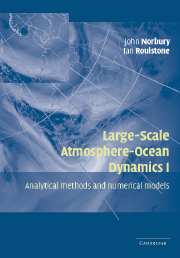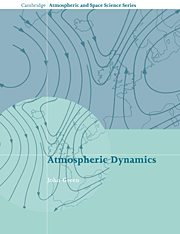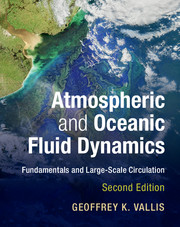Large-Scale Atmosphere-Ocean Dynamics
The complex flows in the atmosphere and oceans are believed to be accurately modeled by the Navier-Stokes equations of fluid mechanics together with classical thermodynamics. However, due to the enormous complexity of these equations, meteorologists and oceanographers have constructed approximate models of the dominant, large-scale flows that control the evolution of weather systems and that describe, for example, the dynamics of cyclones and ocean eddies. The simplifications often result in models that are amenable to solution both analytically and numerically. The volume examines and explains why such simplifications to Newton's second law produce accurate, useful models and, just as the meteorologist seeks patterns in the weather, mathematicians seek structure in the governing equations, such as groups of transformations, Hamiltonian structure and stability.
- Relevant for both mathematicians and meteorologists
- Contributions from top researchers in the field
- Contains tutorial material as well as surveys of current state of knowledge
Product details
September 2002Hardback
9780521807579
396 pages
244 × 170 × 22 mm
0.83kg
Available
Table of Contents
- Introduction J. C. R. Hunt, J. Norbury and I. Roulstone
- 1. Balanced models in geophysical fluid dynamics: Hamiltonian formulation, constraints and formal stability O. Bokhove
- 2. The swinging spring: a simple model of atmospheric balance P. Lynch
- 3. On the stationary spectra for an ensemble of plane weakly nonlinear internal gravity waves P. Caillol and V. Zeitlin
- 4. Hamiltonian description of shear flow N. J. Balmforth and P. J. Morrison
- 5. Some applications of transformation theory in mechanics M. J. Sewell
- 6. Legendre-transformable semi-geostrophic theories R. J. Purser
- 7. The Euler-Poincaré equations in geophysical fluid dynamics D. D. Holm, J. E. Marsden and T. Ratiu
- 8. Are there higher-accuracy analogues of semi-geostrophic theory? M. E. McIntyre and I. Roulstone.









